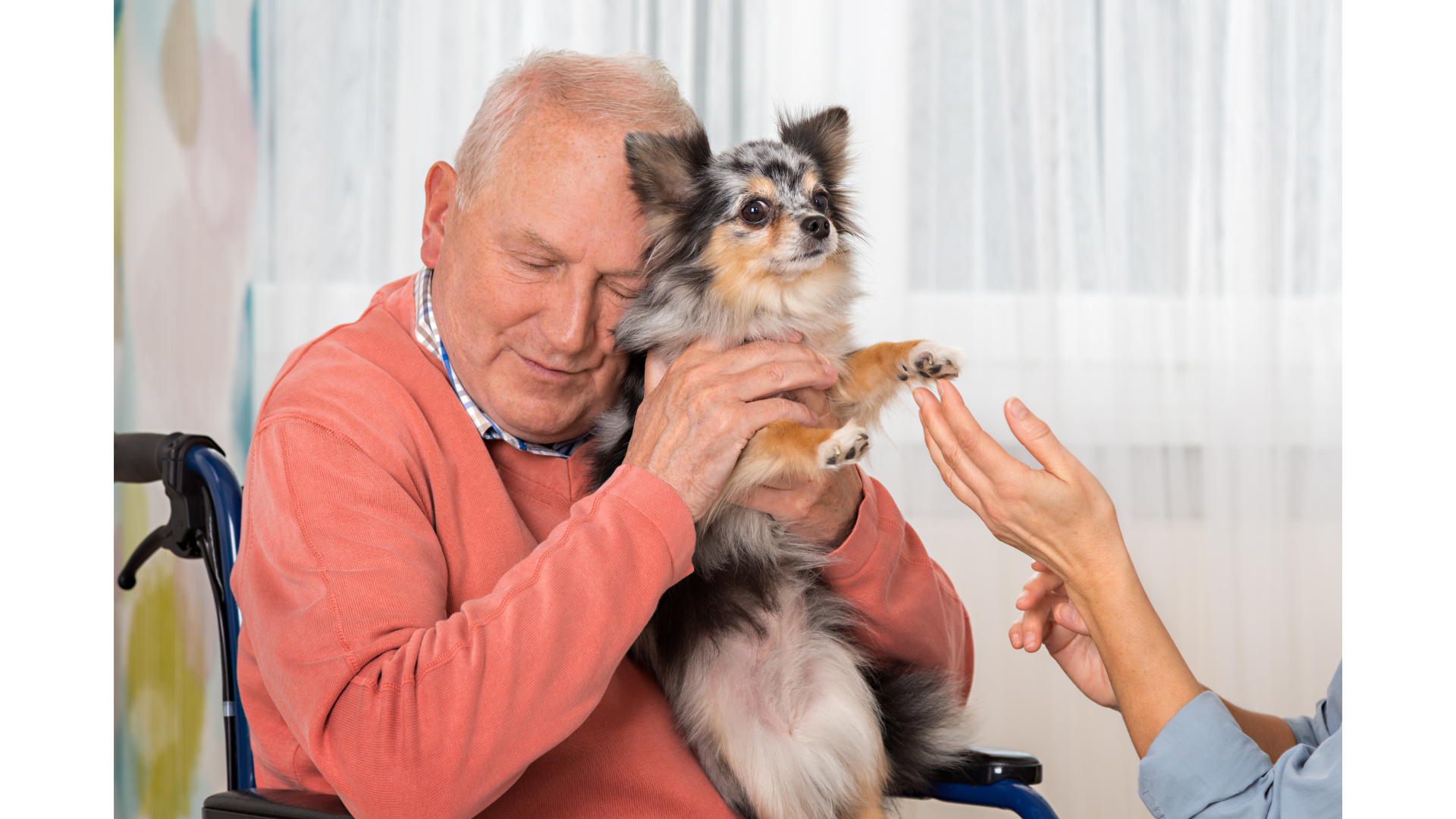No matter how hard we try, it’s hard to stay gloomy or out-of-sorts when our favourite pet shuffles up to us, a dog runs up to greet us in the street, or even when a friend shares a cute pet video on Instagram.
A study by Cambridge University into the positive effects of pet ownership on human health has identified that the support we receive from animals not only benefits the psychological wellbeing of adults, but may also be a major influence on healthy child development and emotional wellbeing. The research, which focused on children aged 12, indicated that relationships with their pets, particularly dogs, were often as strong as those with siblings.1
Why is the human-animal bond so powerful?
The American Veterinary Medical Association (2007) defines the bond between humans and companion animals as “a mutually beneficial and dynamic relationship influenced by behaviors essential to the health and wellbeing of both”.2
Animals make loyal companions and great confidants. Their love is unconditional and non-judgemental; they seem to understand our emotions and provide a good listening ear.3
Research has shown that pets can increase our levels of dopamine and serotonin, and when dogs and humans interact, both parties experience a surge of oxytocin, a hormone which makes us feel good.4
There is also increasing scientific evidence that pets can benefit our physical health. Just stroking a pet, or watching a fish swim, can help us to relax, reducing our heart rate and lowering blood pressure. Studies have found that pet owners are not only less prone to heart attacks5, but also have a better chance of surviving a heart attack. 6
Sadly, not everyone is able to keep pets. They may be limited by accommodation restrictions, for example, or they may not be able to care for them on a day-to-day basis.
Animal assisted intervention (AAI)
Animal assisted interventions have been proving beneficial to people of all ages for decades, bringing companionship, practical support and improved mental health. They have also been shown to reduce physiological responses to stress, such as increased or variable heart rate, and low mood and anxiety.
Assistance dogs are welcomed for their support to those who have disabilities and a programme in the US has found that service dogs can also help veterans with PTSD. Not only does their companionship reduce feelings of stress, anxiety and depression, but they are also trained to ward off or help with panic attacks.7
What is animal assisted therapy?
Animal therapy is now widely used to support wellbeing and rehabilitation initiatives as a way for people to benefit from contact with animals who are not able to keep them as pets. It can also be used to support cognitive behaviour therapy (CBT).
Studies have observed the beneficial effects of therapy dogs on the elderly, especially those transitioning from a home environment to a residential facility which does not welcome pets, as well as children with autism, university students, hospital and hospice patients. Trials have even reported beneficial results for students connecting with therapy dogs online.8
They also have a positive effect on those in closed institutions, including prisons and drug or alcohol rehabilitation centres, as a complement to traditional treatments.
Another study in the US assessed the effects of therapy dog visits on the welfare of nurses working in an outpatient facility, to observe whether this could help alleviate nursing burnout, compassion fatigue, and increase work satisfaction. Those taking part reported increased feelings of happiness, reduced feelings of being drained and overwhelmed, reduced self-reported responses of depression and improved emotional wellbeing.9
Why pets are good therapists
Building relationships and social connections through human interaction is a key part of maintaining and improving our mental health. Part of the joy of building a connection with an animal is discovering who they are and what they enjoy.
As long as we behave in a way that is comfortable for an animal, we can also build emotional relationships and connections with pets.
Equine assisted therapy
Horse-riding therapy has long been providing both physical and emotional benefits to children with disabilities, helping to improve their balance, posture and hand-to-eye coordination.
Learning how to communicate with and care for horses has been found to help bring calm and emotional control for young people experiencing mental health and behavioural issues, helping them to learn to trust and become more socially aware.
Equine therapy which includes feeding, grooming and leading horses, but no riding, has been found beneficial to people with PTSD and those coping with issues such as addiction, helping to process and change negative behaviours.
The power of the purr
Over the past decade, the benefits of feline therapy have also become widely recognised. Cat cafés, which first became popular in Taiwan and Japan, have spread across the world, and are often chosen as study rooms by young students.
Just stroking or cuddling a cat can lift your spirits, alleviate symptoms of stress and anxiety, and reduce feelings of loneliness. Physical contact with a cat has been found to stimulate the human body to secrete endomorphins, as well as lowering blood pressure and cholesterol.10
Anyone with a cat will know that its purr can bring instant calm, especially when we are feeling stressed or emotional. But recent studies have shown that purr therapy may also have bone and muscle healing properties. Domestic cats purr at a frequency of approximately 25 Hertz, in a range that promotes tissue regeneration. These vibrations stimulate the muscles and so support bone growth. (Brunnberg, L: Clinic for Small Animals, Free University of Berlin).
Doctors and physiotherapists have been prescribing whole body vibration exercise for a few years to athletes or patients with muscle or bone problems, in order to strengthen the skeleton and the muscles around it. This kind of vibration therapy may also be used for patients with osteoporosis as the continuous mechanic vibrations that are produced by purring can help to improve the stability and thickness of the bones.
This approach to maintaining bone density is also being applied in space! Bone density loss is a serious concern for astronauts spending extended time in low gravity environments, and the restorative effects of a cat’s purring is being investigated by organisations like NASA and the European Space Agency.11
Useful links for further information:
Pets as Therapy (PAT)
Riding for the Disabled (RDA)
References
[1] Cassels, M et al. One of the family? Measuring early adolescents’ relationships with pets and siblings. Journal of Applied Developmental Psychology; 24 Jan 2017; DOI: 10.1016/j.appdev.2017.01.003
[2] Gee, N.R and Mueller. M. A systematic review of research on pet ownership and animal interactions among older adults. Anthrozoos A Multidisciplinary Journal of The Interactions of People & Animals 32(2):183-207.; March 2019; DOI:10.1080/08927936.2019.1569903.
[3] de Souza Albuquerque, N. et al. (2016) “Dogs recognise dog and human emotions,” Biology Letters 12(1):20150883 [Preprint]. Available at: https://doi.org/10.1098/rsbl.2015.0883.
[4] Marshall-Pescini, S., Schaebs, F. S., Gaugg, A., Meinert, A., Deschner, T., & Range, F. (2019). The Role of Oxytocin in the Dog–Owner Relationship. Animals : an Open Access Journal from MDPI, 9(10). https://doi.org/10.3390/ani9100792
[5] WP Anderson, CM Reid, GLR Jennings: Pet ownership and risk factors for cardiovascular disease. Medical Journal of Australia, 1992
[6] E Friedmann, SA Thomas: Pet Ownership, social support and one year survival after myocardial infarction in the Cardiac Arrhythmia Suppression Trial. America Journal of Cardiology, 1995
[7] Nieforth, L. and O’Haire, M. (2021) Service dogs can help veterans with PTSD – growing evidence shows they may reduce anxiety in practical ways. Available at: https://theconversation.com/service-dogs-can-help-veterans-with-ptsd-growing-evidence-shows-they-may-reduce-anxiety-in-practical-ways-156550.
[8] Binfet, J.-T. (2022) Online sessions with therapy dogs can help students feel less stressed. Available at: https://theconversation.com/online-sessions-with-therapy-dogs-can-help-students-feel-less-stressed-182554.
[9] Clark, S. (2018) Impact of therapy dog visits on outpatient nurse welfare and job satisfaction | Pet Behaviour Science. Available at: https://www.uco.es/ucopress/ojs/index.php/pet/article/view/11172.
[10] Goleman, M. et al. (2012) “Cat therapy as an alternative form of animal-assisted therapy,” Medycyna Weterynaryjna 68(12):732-735 [Preprint]. Available at:
[11] Stier, S. (2018) Cats Help Astronauts in Space. Available at: https://www.linkedin.com/pulse/cats-help-astronauts-space-sam-stier/.






Leave A Comment